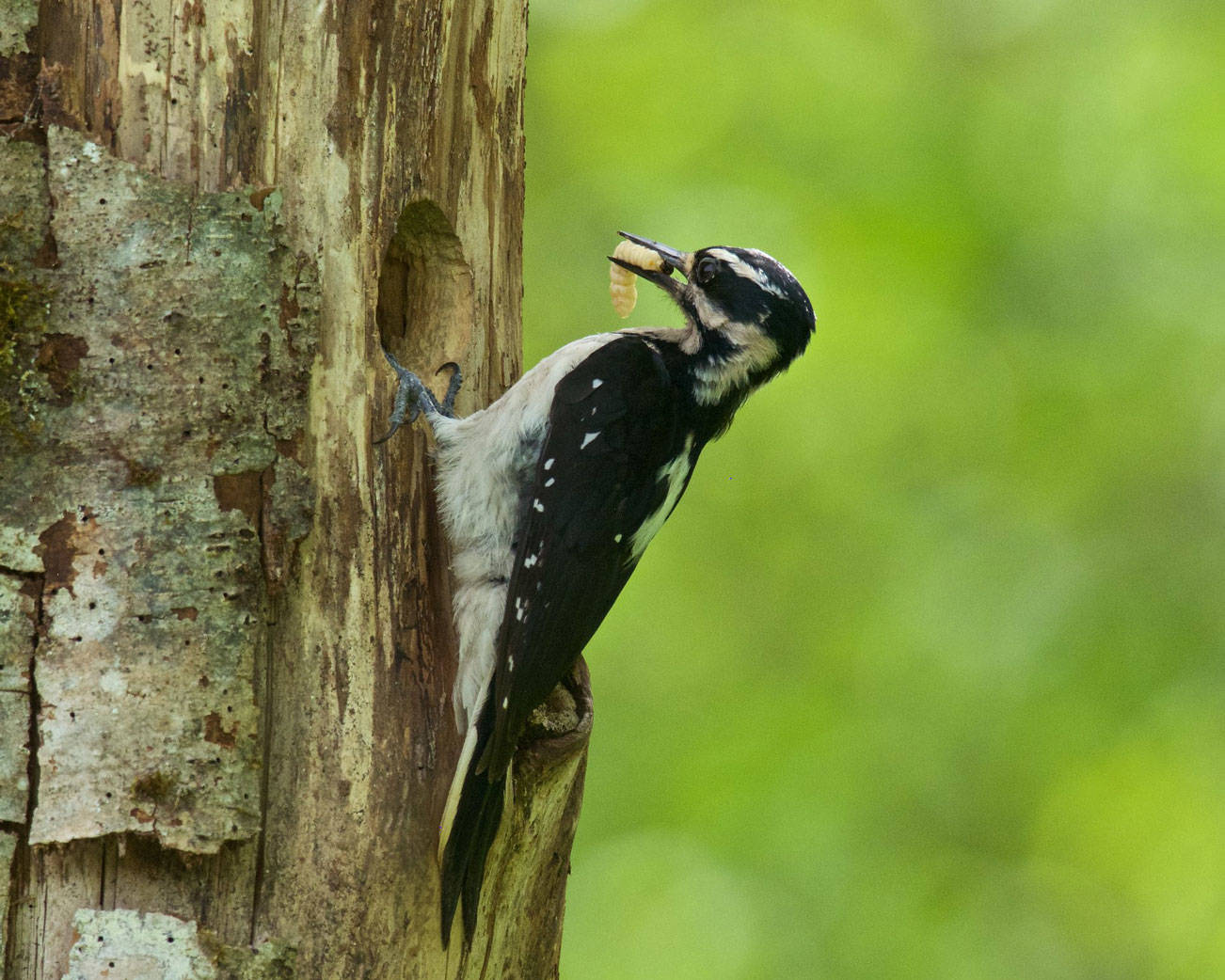The first time I saw and heard a Hairy Woodpecker I was astonished at how fast they struck a tree with their bill. If you have never seen one working on a hole in a tree, just listen to their pattern at the end of the audio on this link. http://www.birdweb.org/birdweb/bird/hairy_woodpecker
That’s fast work.
General Description: Hairy Woodpeckers are one of two very similar birds. They are about a third larger than the similar Downy Woodpecker and their bill is larger. The Downy’s shorter bill and rounder head appear to be “cuter” than the Hairy, and that’s about the only differences….size. Both are mostly black with white patches down the middle of their back and white spots on their wings, and the males have similar red patches on the back of their head. The Hairy Woodpecker is 7 to 10 inches in length, with a 13 to 16-inch wingspan, and they weigh anywhere from 1.4 to 3.4 ounces.
Habitat: Common just about anywhere on the Harbor. They prefer mature woodlands but can also be found on forest edges, in parks, at backyard feeders where black oil sunflower seeds and/or suet are offered and in cemeteries.
Behavior: Hairy Woodpeckers forage on the trunks and bigger limbs of trees, prying off the bark to get at their prey. They also choose bigger trees in which to excavate their nests. They hitch up tree trunks using their stiff tail feathers to prop themselves upright, lunging forward with both feet together. They can also sometimes be found at the base of ponderosa pines where a particular species of bark beetle can be found.
Nesting: Hairy Woodpeckers form a monogamous pair bond in late winter then usually continue that bond over the succeeding nesting seasons. Both male and female excavate a nest in soft or rotting wood; they prefer deciduous trees for their nest if they can’t find a snag. The nest hole is about 2 inches high by about 1.5 inches across, and the hole widens at the bottom of the excavation to accommodate the eggs and the incubating parent. The nest entrance is often on the underside of a main branch or stub to discourage flying squirrels or sapsuckers from taking over the nest. Both parents incubate the four eggs for about 2 weeks, and both feed the young. The young leave the nest after 28 to 30 days, then follow their parents around for some time afterward.
Migration: Considered a year-round resident in western Washington, but some non-resident birds may move down in elevation in the winter. There are also birds from farther north that may migrate south into our area in winter.
Conservation Status: I’m happy to say Hairy Woodpeckers are actually increasing in population although they have probably decreased from historic numbers due to forest practices of removing dead trees. They have also had more nesting and roosting competition from European Starlings and House Sparrows.
When and Where to Find on Grays Harbor: They can be found in appropriate habitat almost anywhere on Grays Harbor, but your best chance of watching them is in a forested area of bigger trees. The sound they make excavating a nest or brooding hole carries quite a distance, so listen before you enter a grove of trees. They can also be heard calling, so listen to the sounds on the link I previously mentioned. Then pick a quiet spot and watch the chips fly!



